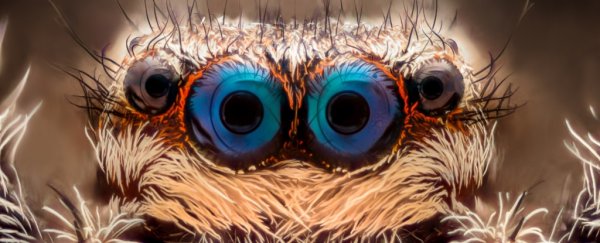Millions of people around the world are affected by arachnophobia – the unreasonable fear of spiders, which evidence suggests could be an innate human response embedded by evolution inside the brain.
But while the fear may be a relic of an ancient survival mechanism, the anxiety it provokes is something most arachnophobes today would rather be free of. Now, an experimental new treatment could help grant their wish, courtesy of the pulse of their own beating hearts.
Scientists in the UK have discovered that patients' own heartbeats can be incorporated into computerised exposure therapy to help them rise above their dread of eight-legged creepy-crawlies – and the treatment might help people overcome other irrational fears too.
"Many of us have phobias of one kind or another – it could be spiders, or clowns or even types of food," says senior researcher and psychiatrist Hugo Critchley from the University of Sussex.
"Treatment usually involves exposing the person to their fear, but this can take a long time."
Exposure therapy, like the name suggests, involves various methods of exposing people over time to the object of their fears, with a view to conditioning them to their traumatic stimuli.
Previous research by some of the same team on interoception – our sensory awareness of the internal state of the body – had suggested the timing of people's heartbeats was linked to fear processing and signals.
In the new study, the researchers wanted to see whether this association could be exploited as part of exposure therapy.
"We tested the principle that cardiac interoceptive signals will modify outcomes of a computerised exposure therapy for spider phobia and thus offer a pathway to increased treatment efficacy," the authors write in their paper.
"We were interested in whether our cardiac manipulation had a further added benefit to classic exposure manipulation."
To test this, the researchers studied 53 healthy participants who recorded high levels of arachnophobia in an online questionnaire.
The whole cohort was divided into three groups, each of which undertook computerised exposure therapy – being shown images of spiders on a computer monitor – while wearing electrocardiography (ECG) sensors to monitor their cardiac activity.
One group was shown the images in time with their heartbeat (during systole, the signalling of cardiac arousal, when heart muscles contract), while another group saw the images in between each heartbeat (diastole, where the muscles relax).
A third group acted as controls, seeing the images at random times.
In the study, most of the participants saw some reduction in their phobia due to the exposure therapy – which is to be expected, since it is an established form of anxiety treatment.
But people's self-reported, subjective sense of threat from spiders decreased the most for people who were in the systole group, exposed to images in sync with their heartbeat.
"This finding suggests better perceptual processing of putative threat stimuli, hence greater 'psychological exposure' to facilitate [phobia] extinction learning," the authors write.
What's more, this effect was increased for people who had better interoception awareness, which for the purposes of this study, meant they were better at being able to detect and count their own heartbeat.
There's a lot more research to be done here, and heartbeats alone won't necessarily ever be a cure-all for anybody's abnormal fear of spiders.
But nonetheless the findings suggest that the specific, timed delivery of exposure therapy around cardiac movements can modulate the therapy's outcomes – as can markers of interoceptive accuracy, which in the future might help tailor treatments to different individuals.
"Our work shows that how we respond to our fears can depend on whether we see them at the time our heart beats, or between heartbeats," Critchley says.
"You could say we're within a heartbeat of helping people beat their phobias."
Yep.
The findings are reported in Psychosomatic Medicine.
